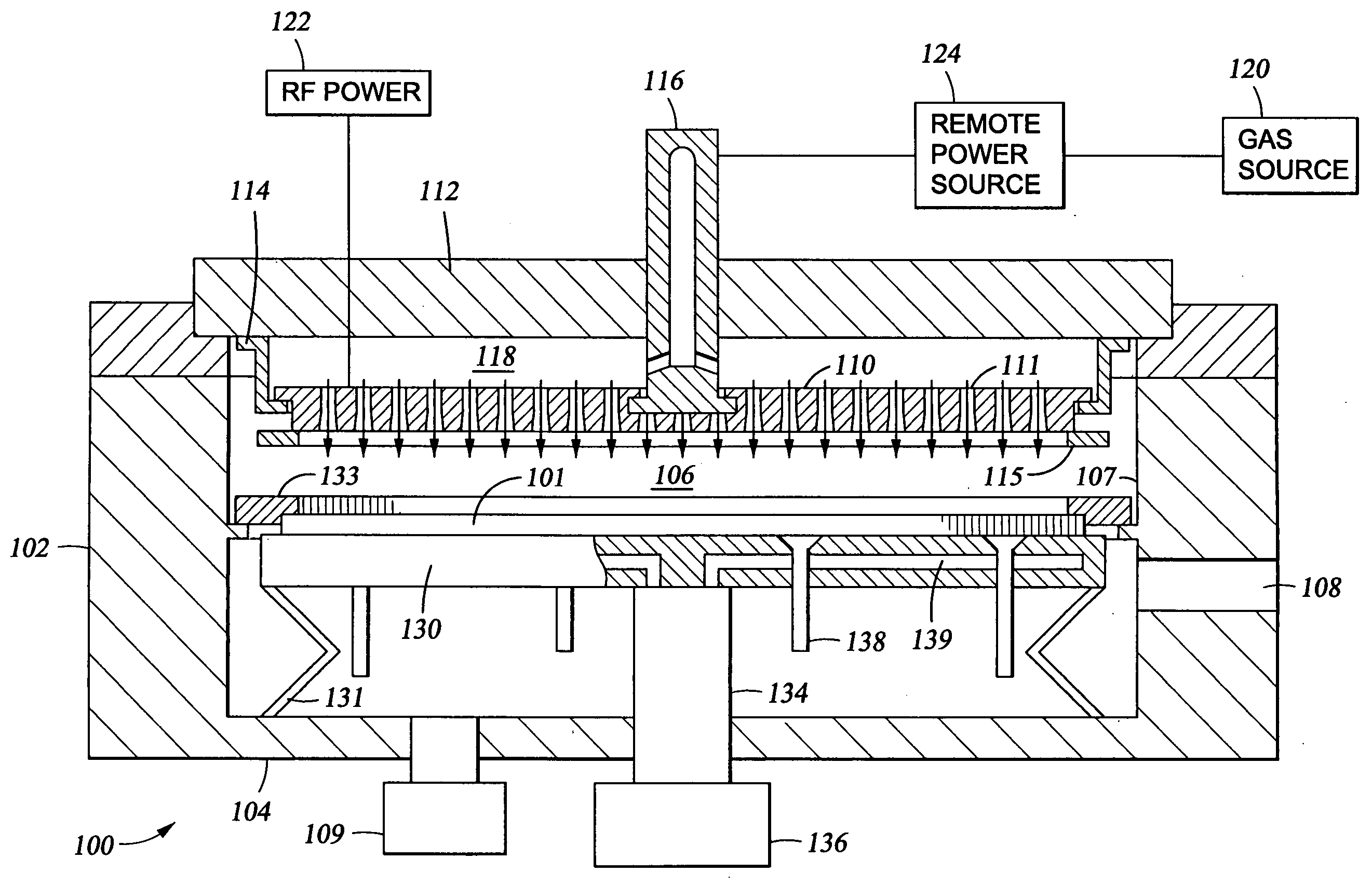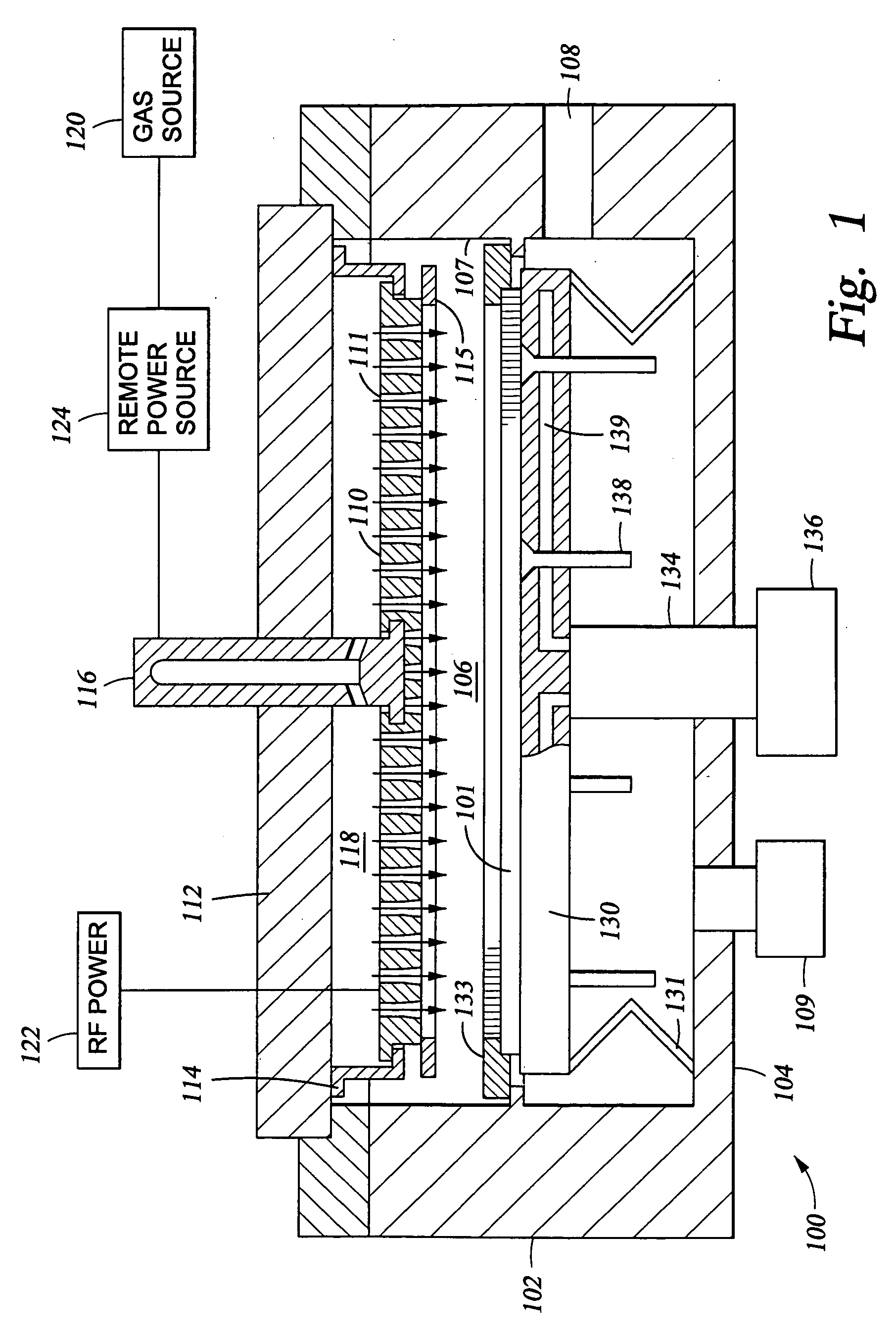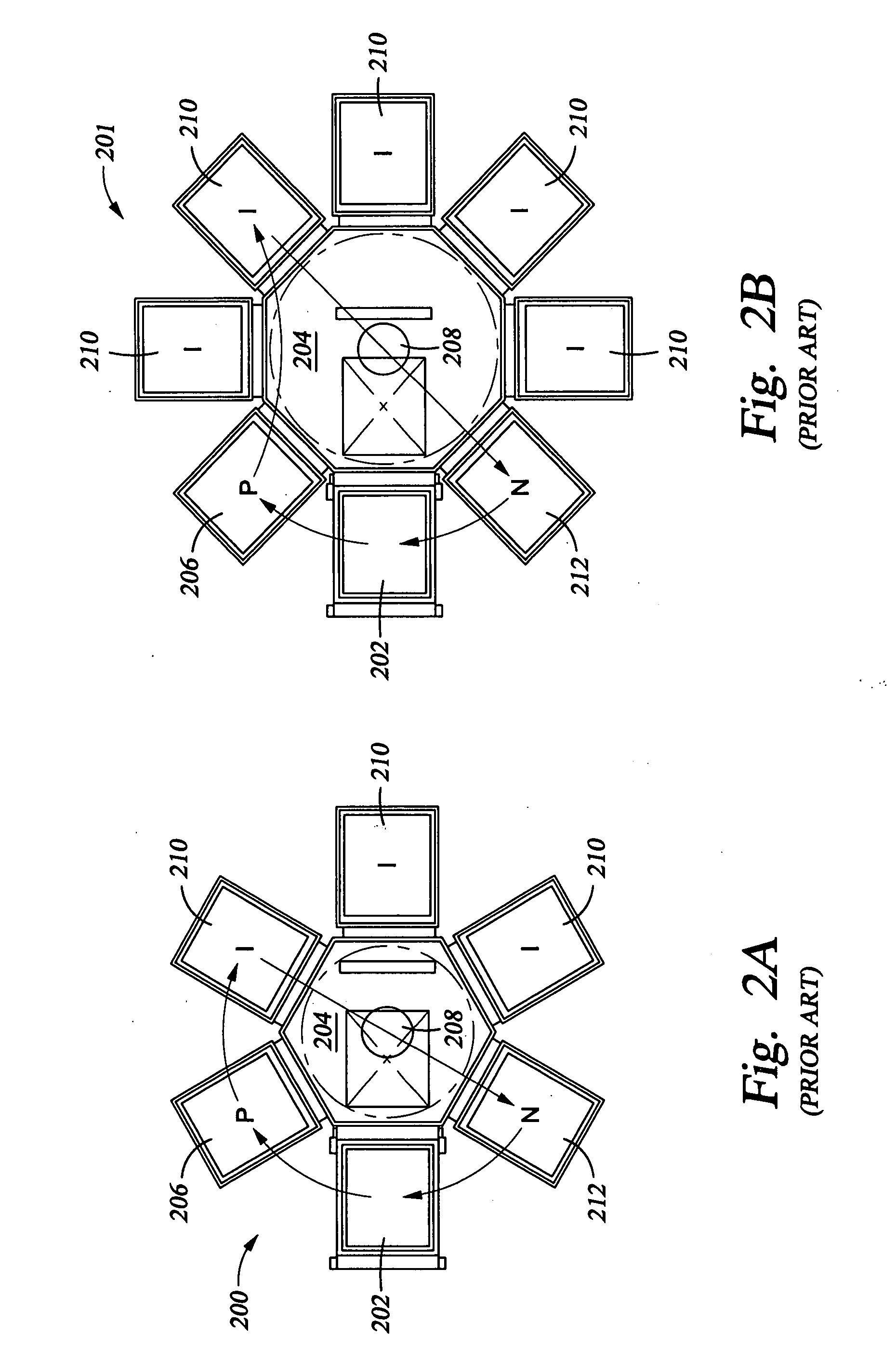Method of forming thin film solar cells
a solar cell and film technology, applied in the field of thin film solar cell forming, can solve the problems of limited throughput of substrates and substantial slowdown of production, and achieve the effects of improving collection efficiency, high collection efficiency, and high collection efficiency
- Summary
- Abstract
- Description
- Claims
- Application Information
AI Technical Summary
Benefits of technology
Problems solved by technology
Method used
Image
Examples
example one
Formation of a Single Junction Solar Cell
[0076]FIG. 3 shows a single stack (single junction) thin film solar cell, which includes a glass substrate 302, top electrode 304, p-layer 306, i-layer 308, n-layer 310, bottom electrode 312, and reflector 314. The interface between p-doped layer 306 and i-layer 308 is illustrated as 307.
[0077]The process steps described herein are those required for deposition of the thin film silicon-containing layers of the kind previously described, where the layers are deposited using PECVD. When all of the silicon-comprising layers in the solar cell are a-silicon-comprising layers (as they are for the single junction solar cell shown in FIG. 3), the PECVD depositions may be made using one of the single processing chambers 230 in cluster processing tool 203, of the kind shown in FIG. 2C. Each of the P / I / N processing chambers 230 for depositing silicon-comprising layers are essentially the same, and are capable of depositing a-silicon. It is also possible...
example two
Formation of a Dual / Tandem Junction Solar Cell
[0085]FIG. 4 shows a dual stack (dual junction) thin film solar cell, which includes a glass substrate 402; top electrode 404; a top p-i-n cell including: a p-doped layer comprising a-silicon 406; i-layer comprising a-silicon 408; and a dual n-doped layer, including a first n-doped layer comprising a-silicon 410, and a second n-doped layer comprising mc-silicon 412; a bottom p-i-n cell including: a p-doped layer comprising mc-silicon 414; i-layer comprising mc-silicon 416; n-doped layer comprising a-silicon 418; a bottom electrode of ZnO TCO 420, and an aluminum or silver reflector 422. An example interface between p-doped layer 406 and i-layer 408 is designated as 407.
[0086]The process steps described herein are limited to the steps required for deposition of the thin film silicon-containing layers previously described, where the layers are deposited using PECVD. The PECVD depositions are made using a cluster processing system 240 of th...
example three
Formation of an Alternative Dual / Tandem Junction Solar Cell
[0099]FIG. 5 shows an alternative dual stack (dual junction) thin film solar cell, which includes a glass substrate 502; top electrode 504; a top p-i-n cell including: a dual p-doped layer comprising an upper portion of mc-silicon 505 and a lower portion of a-silicon 506; i-layer comprising a-silicon 508; and a dual n-doped layer, including a first n-doped layer comprising a-silicon 510, and a second n-doped layer comprising mc-silicon 512; a bottom p-i-n cell including: a p-doped layer comprising mc-silicon 514; i-layer comprising mc-silicon 516; n-doped layer comprising a-silicon 518; a bottom electrode of ZnO TCO 520, and an aluminum or silver reflector 522.
[0100]The process steps described herein are limited to the steps required for deposition of the thin film silicon-containing layers previously described, where the layers are deposited using PECVD. The PECVD depositions are made using a cluster processing system 240 o...
PUM
| Property | Measurement | Unit |
|---|---|---|
| Temperature | aaaaa | aaaaa |
| Temperature | aaaaa | aaaaa |
| Area | aaaaa | aaaaa |
Abstract
Description
Claims
Application Information
 Login to View More
Login to View More - R&D
- Intellectual Property
- Life Sciences
- Materials
- Tech Scout
- Unparalleled Data Quality
- Higher Quality Content
- 60% Fewer Hallucinations
Browse by: Latest US Patents, China's latest patents, Technical Efficacy Thesaurus, Application Domain, Technology Topic, Popular Technical Reports.
© 2025 PatSnap. All rights reserved.Legal|Privacy policy|Modern Slavery Act Transparency Statement|Sitemap|About US| Contact US: help@patsnap.com



